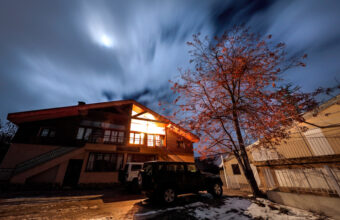Whether 35% tint is too dark at night can depend on several factors including personal preference, driving conditions, and local regulations.
Here are some considerations…
- Visibility – 35% tint allows 35% of visible light to pass through, which means it will reduce the amount of light entering the vehicle. At night, when visibility is already reduced, darker tint may further limit visibility both inside and outside the vehicle. This reduction in visibility can be more pronounced in poorly-lit areas or when there is oncoming traffic with bright headlights.
- Legal Considerations – Before installing tint, it’s crucial to check local regulations and laws regarding tint darkness. In many places, there are restrictions on how dark tint can be, particularly on front side windows and windshields. 35% tint may or may not comply with these regulations, depending on your location.
- Adjustment Period – If you’re not accustomed to driving with tinted windows, it may take some time to adjust to the reduced visibility, particularly at night. It’s essential to take extra caution until you are comfortable with the level of visibility provided by the tint.
- Safety – Reduced visibility can affect safety, especially in situations where quick reaction times are necessary. Dark tint may hinder your ability to see pedestrians, cyclists, or obstacles on the road, increasing the risk of accidents.
The decision on whether 35% tint is too dark at night depends on your individual preferences, driving habits, and local regulations. It’s advisable to consider these factors carefully and consult with a professional tint installer for guidance before making a decision. They can provide recommendations based on your specific needs and ensure compliance with applicable laws.






